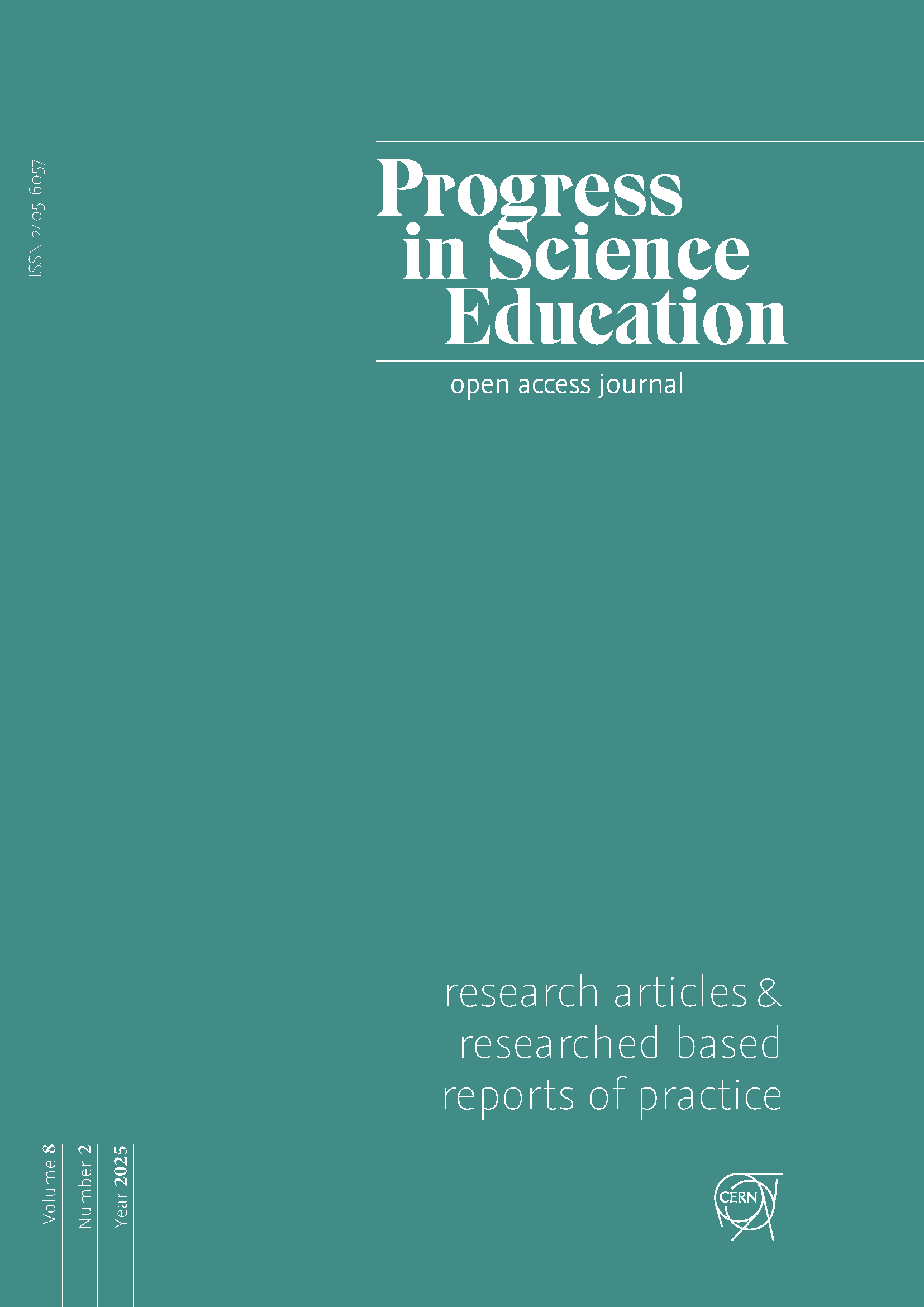Die naturwissenschaftsbezogenen Arbeitsweisen im Lehrplan 21
Rekonstruktion einer Typologie aus naturwissenschafts-didaktischer Perspektive
DOI:
https://doi.org/10.25321/prise.2025.1574Abstract
Background: Curricula are state-issued instruments of governance in education. They mandate what and to which extent it should be taught and which competencies the students should accomplish. Composing curricula involves experts from diverse branches of schools’ subjects. Necessarily, curricula result to be documents of compromise. Expertise that has been condensed in them is frequently not explicated, and some of the curricula’s governing potentials are forfeited. Teachers may not be able to realize easily the experts’ implicit suggestions. Consequently, they cannot necessarily profit from the experts’ advice to structure their teaching.
The current article aims to reconstruct some of the implicit expertise for a specific aspect of the Swiss German curriculum for the lower secondary level (Lehrplan 21 – referred to as Curriculum in this abstract): namely, its suggested modi of thinking, working, and acting (Denk- Arbeits- und Handlungsweisen – DAH – ‘Modi Operandi’ in this abstract). These are referenced in the context of the subject NMG (Natur, Mensch, Gesellschaft), which covers both natural and social science content and methods.
Purpose: The article suggests that the derived list of Modi Operandi can be organized in a structured typology. In doing so, it proposes that learning individual Modi Operandi is differentially difficult for students depending on a specific Modus Operandi’s locus in the typology. Validating the typology empirically could ultimately lead to improving science education by sketching learning progressions on Modi Operandi which respect the increase of difficulties between individual Modi Operandi.
Design and Methods: The typology is derived theoretically. First, relevant scientific Modi Operandi are identified from the Curriculum and operationalized for the purpose of sketching a typology drawing on current literature from science education research. The typology aims at distinguishing between Modi Operandi by as few criteria as possible. Recent modeling studies on student competences from Austria, Germany and Switzerland inform this approach. Finally, a typology for science-related Modi Operandi of the Curriculum is proposed and the outline for an empirical validation study is developed.
Results: The typology suggests science-related Modi Operandi to be distinctive with regard to: (1) their being invasive or non-invasive, i.e., if objects of study need to be manipulated substantially or not; (2) their approach being holistic or selective; (3) how taxing they are in terms of Cognitive Load, i.e., if they require the handling of numerous items of information at the same time or if teachers provide scaffolding. Concerning criteria (1) and (2), nine science-related Modi Operandi can be clustered into four groups: (I) Reconnaissances (non-invasive, holistic), (II) Explorations (invasive, holistic), (III) Observations (non-invasive, selective), and (IV) Experiments (invasive, selective). Within these groups, further distinctions apply with regard to increasing Cognitive Load.
Conclusions: The typology is meant to form the basis for an empirical validation study that is to investigate empirical difficulties of tasks with year 3–6 students (ages 9–12). The typology will inform item construction. Subsequent analyses of students’ performance data will outline the development of empirical difficulties between individual Modi Operandi. Should the typology prove to be a valid derivation, i.e., should empirical difficulties manifest in the hypothesized way, this could form the basis for developing learning progressions that align with students’ potentials. This, in turn, could greatly contribute to the development of science education at the lower secondary level.
Downloads
Additional Files
Published
Issue
Section
License
Copyright (c) 2025 The Author/s

This work is licensed under a Creative Commons Attribution-NonCommercial-ShareAlike 4.0 International License.
Authors who publish with this journal agree to the following terms:
- Authors retain copyright and grant the journal right of first publication with the work simultaneously licensed under a Creative Commons Attribution License that allows others to share the work with an acknowledgement of the work's authorship and initial publication in this journal. The applicable licence is https://creativecommons.org/licenses/by-nc-sa/4.0/, which means
You are free to:
Share — copy and redistribute the material in any medium or format
Adapt — remix, transform, and build upon the material under the following terms:
Attribution: You must give appropriate credit, provide a link to the license, and indicate if changes were made. You may do so in any reasonable manner, but not in any way that suggests the licensor endorses you or your use.
NonCommercial: You may not use the material for commercial purposes.
ShareAlike: If you remix, transform, or build upon the material, you must distribute your contributions under the same license as the original.
Authors are able to enter into separate, additional contractual arrangements for the non-exclusive distribution of the journal's published version of the work (e.g., post it to an institutional repository or publish it in a book), with an acknowledgement of its initial publication in this journal.
Authors are permitted and encouraged to post their work online (e.g., in institutional repositories or on their website) prior to and during the submission process, as it can lead to productive exchanges, as well as earlier and greater citation of published work (see The Effect of Open Access).

